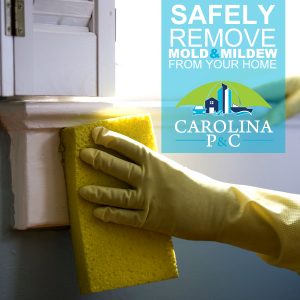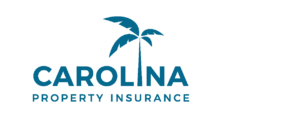How To SAFELY Remove Mold & Mildew From Your Home
 Mildew and molds are fungi – simple microscopic organisms that thrive anywhere there is a moist environment. Molds are a necessary part of the environment; without them, leaves would not decay and aspects of soil enrichment could not take place. It is their ability to destroy organic materials, however, that makes mold a problem for people – in our homes and in our bodies.
Mildew and molds are fungi – simple microscopic organisms that thrive anywhere there is a moist environment. Molds are a necessary part of the environment; without them, leaves would not decay and aspects of soil enrichment could not take place. It is their ability to destroy organic materials, however, that makes mold a problem for people – in our homes and in our bodies.
Mold typically begins to develop inside a home within 24-48 hours of water exposure and will continue to grow until steps are taken to eliminate the source of moisture and effectively deal with the mold problem.
We have gathered some FEMA guidelines to help you prepare for handling mold.
Mold hazards
Mold-related health problems occur when people inhale airborne mold spores. Some people are more sensitive to the mold spores and have stronger reactions to smaller amounts depending on their allergies. Children, elderly, and individuals with an immune disorder are considered to be particularly at risk.
Common symptoms of mold exposure include:
- Eye irritation
- Nasal and sinus congestion
- Respiratory Problems such as wheezing and asthma attacks
- Nose or throat itchiness and irritation
- Skin irritation such as rashes or hives
- Nervous system problems such as headaches and memory loss
- Dry hack or cough
- Dull aches and pains
Take safety precautions
- Make sure the working area is well ventilated.
- Wear gloves, mask and cover your eyes.
- Special N-95 or P-100 respirators are recommended for working with mold.
- Wear old clothes and shoes that you can throw away after the cleanup.
- If mold is present, clean a small test patch. If you feel your health is adversely affected, consider hiring a professional to carry out the work.
- Remember that disinfectants are intended to be applied to already cleaned materials.
- Remember, when cleaning and disinfecting molds they release mold spores when disturbed.
- Never mix bleach with ammonia; fumes from the combination are toxic.
When discarding items that are contaminated by mold, use extreme caution or hire a professional.
Before you start cleaning
- Turn off the main electrical power at the circuit breaker box if the building’s wiring is wet or moldy. Have an electrician check the house’s electrical system before turning power on again.
- Make sure the working area is well ventilated. Open the house to fresh air when the humidity is lower outside than inside. Use fans and dehumidifiers to remove excess moisture unless mold has already started to grow (fans may spread existing mold).
- If you still have electricity – you can use the furnace or AC to help remove humidity but only if the insulation and equipment never got wet. Be warned though, this can circulate mold spores through your house. So make sure you shut the AC off when scrubbing mold and stirring up mold spores.
- Remove all wet porous items such as furniture, rugs, bedding, toys, and carpeting and discard.
- Interior walls and ceilings: Remove all wet or contaminated porous materials such as ceiling tiles, drywall, and wood byproducts. If wallboard is soaked, remove to a foot above the water mark and discard.
- Drain walls by removing the baseboard and drilling holes near the floor. Dry panel-type wall material by pulling the bottom edge out from studs.
- Check inside of the wall for hidden mold/dampness. Remove all wet insulation. Discard all but rigid insulation, which can be reinstalled after disinfecting and drying.
Cleaning hard surfaces
- Wash items such as metal, glass, solid wood, plastic and other non-porous materials with a non-ammonia detergent and hot water.
- Use a stiff brush on rough surface materials such as concrete. Use a wet-dry shop vacuum to remove water and clean items such as studs or exposed wood framing.
- Be warned. Scrubbing mold with a brush on a hard surface will stir up lots of mold spores into the air.
- Disinfect all cleaned surfaces with a 10 percent bleach solution. Let the solution stay on the surface for at least 10 minutes before rinsing with clean water or allowing to dry.
Cleaning porous materials
- Porous materials include upholstered furniture, clothing, curtains, books and papers and rugs. Pretty much anything that can absorb water.
- You have less than 48 hours to address the cleaning of any porous items that were inundated with water. Once cleaned, they will need to dry for at least 48 hours and monitored for mold development. If mold is spotted or suspected, its best to throw it out and not risk your health.



